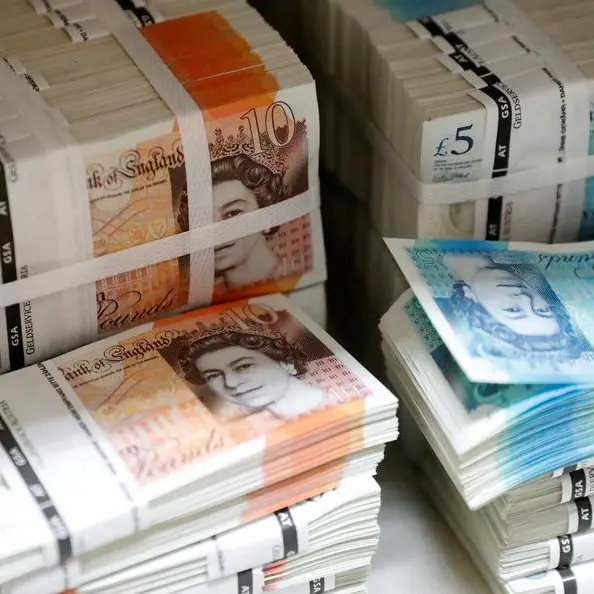PHOTO
Sterling hovered around its highest levels in almost three months against the euro on Tuesday, as markets raised their bets on rate cuts by the European Central Bank, which widened their divergence with the Bank of England.
Higher interest rates attract investors' demand and boost the value of a currency.
Money markets fully price in more than 140 bps of ECB rate cuts next year -- from around 135 bps the day before -- with the first move in March, while almost fully discounting a first BoE cut in June 2024.
Sterling was flat at 85.80 pence per euro. It retraced earlier this week after hitting its highest since Sept. 11 on Friday -- at 85.60 pence per euro -- as analysts have mixed views about the policy path of the ECB and the BoE.
"When it comes to EUR/GBP, the drop appears to be overdone, and we expect a gradual dovish repricing in Bank of England rate expectations to favour a rebound above 0.8600, although that may not happen in the very short term," said Francesco Pesole forex strategist at ING.
Dovish commentary from the ECB has now seen investors expecting a deeper easing cycle in the euro zone than in the UK.
BofA recently argued that BoE will likely stay on hold for most of 2024, and markets finally see signs that the message that rates might have to stay high for an extended period is finally being heard.
The British public's expectations for inflation over the medium to long term, which the Bank of England closely watches, rose in October, supporting a higher-for-longer view.
Andrzej Szczepaniak, economist at Nomura, said the market pricing for ECB near-term rate cuts appears too aggressive in response to inflation expectations.
He forecasts the next moves to be rate cuts in September 2024 for the ECB and August for the BoE as ongoing weakness in the surveys continued to suggest mild recessions in the euro area and the UK.
"We see 125 bps of cuts in both cases, taking rates down to 2.75% for the ECB and 4% for the Bank of England over similar time frames – by early 2025. Deeper recessions could bring that timing forward," he said.
The pound was down 0.1% against the U.S. dollar, which regained some ground on Tuesday and hovered near a one-week high ahead of key economic indicators later this week.
"We still think that a convergence towards the key 1.2500 and even the 100 and 200-day MA at 1.2470 are more likely than a further rally given room for a dollar rebound, although US data means risks are quite binary," ING's Pesole said.
(Reporting by Stefano Rebaudo; Editing by Bernadette Baum)












